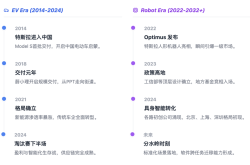Why Hasn't China Embraced Smartphone eSIM Cards?
![]() 09/12 2025
09/12 2025
![]() 645
645
Following the release of the Apple iPhone 17, one of the hottest topics has been its complete adoption of eSIM cards, which enables a thinner phone design.
However, Apple phones equipped with eSIM cards are currently unavailable for use in mainland China.

So, why hasn't China adopted smartphone eSIM cards?
China has indeed proceeded with more caution than some other countries and regions in advancing eSIM technology.
This caution primarily arises from considerations of regulatory security (especially in preventing telecommunications fraud) and industry interest dynamics, rather than from issues with the technology itself.
Let me delve into the details below.
What is eSIM?
eSIM, or embedded SIM, is a digital SIM technology that is directly soldered onto a device's motherboard. It enables users to select and switch operator plans via software, eliminating the need for physical SIM card insertion or removal, and thus offers greater flexibility and convenience.
Regulatory Security: A Top Priority
China enforces stringent real-name registration management for phone cards, a crucial measure in combating telecommunications fraud. The activation of traditional physical SIM cards necessitates users to visit a business office for facial recognition and identity verification, thereby reducing the likelihood of fraudulent account openings at the source.
However, the 'over-the-air provisioning' feature of eSIM allows for remote activation. While this feature is convenient, it could potentially be exploited by criminals for remote illegal account openings and fraudulent activities.
In July 2023, China Mobile and China Telecom suspended the eSIM one-number-dual-device service for smartwatches due to vulnerabilities in real-name authentication associated with eSIM's 'over-the-air provisioning' feature.
China's 'Operation to Cut Off Illegal Phone Cards' has proven highly effective in curbing fraud cases.
Data indicates that China's per-thousand-population fraud case rate is significantly lower than that of the United States and Brazil. Hence, regulatory authorities must prioritize security and controllability when advancing eSIM.
Currently, operators like China Unicom require users to activate eSIM at physical business offices, a compromise solution that balances security and convenience within the current regulatory framework.
Industry Interests: Operator Considerations
eSIM technology enables users to switch operators more easily, potentially intensifying competition among operators and compressing profit margins. The vast user base and long-established usage habits associated with physical SIM cards are also key factors in operator strategy formulation.
However, eSIM also presents operators with substantial cost optimization opportunities.
Calculations by the China Mobile Research Institute suggest that full eSIM adoption could reduce user management costs by over 30%. Against the backdrop of continuously declining 5G tariffs, operators have a growing imperative to reduce costs and improve efficiency through technological means.
Different Strategies of the Three Major Operators
The three major domestic operators also differ in their eSIM promotion strategies and progress:
China Unicom has been relatively proactive, restarting eSIM services in 25 provinces and municipalities, supporting the iPhone Air's eSIM project, but requiring offline activation for users.
China Telecom is prepared and awaiting approval. Its eSIM mobile phone services are fully prepared and expected to launch soon after receiving formal approval from the Ministry of Industry and Information Technology for commercial trials.
China Mobile has been more cautious, submitting an application for eSIM mobile phone services but with an uncertain launch timeline. Its previous eSIM efforts have primarily focused on smart wearable devices.
Future Outlook
The development of eSIM in China is an inevitable trend, but it will be a steady and gradual process.
Technological safeguards are fundamental:
Operators need to establish more reliable security technology standards. For example, China Unicom's '5G AI Terminal White Paper' stipulates that 5G terminals supporting eSIM must pre-install eSIM certificates jointly recognized by the China Academy of Information and Communications Technology and the three major operators, as well as adopt innovative measures like blockchain identity verification.
Regulatory policies are gradually improving:
In June 2025, the Ministry of Industry and Information Technology formally approved the three major operators to comprehensively promote eSIM technology applications, marking a policy 'relaxation.' However, this is contingent upon resolving issues like real-name authentication vulnerabilities through technological upgrades.
Push from terminal manufacturers like Apple:
The emergence of devices like the Apple iPhone Air, which exclusively support eSIM, has created a 'hardware-driven' market adaptation scenario, accelerating the maturity of the industry chain and prompting a shift in operator attitudes.
Summary
In summary, China's cautious approach to eSIM approval stems from a balance of various factors, including technological progress, security regulation, and industry ecology.
Currently, the promotion of eSIM in China is gradually advancing, but it requires a process. It is anticipated that with the continuous improvement of security technologies and the steady advancement of regulatory policies, eSIM will gradually become widespread in China.







